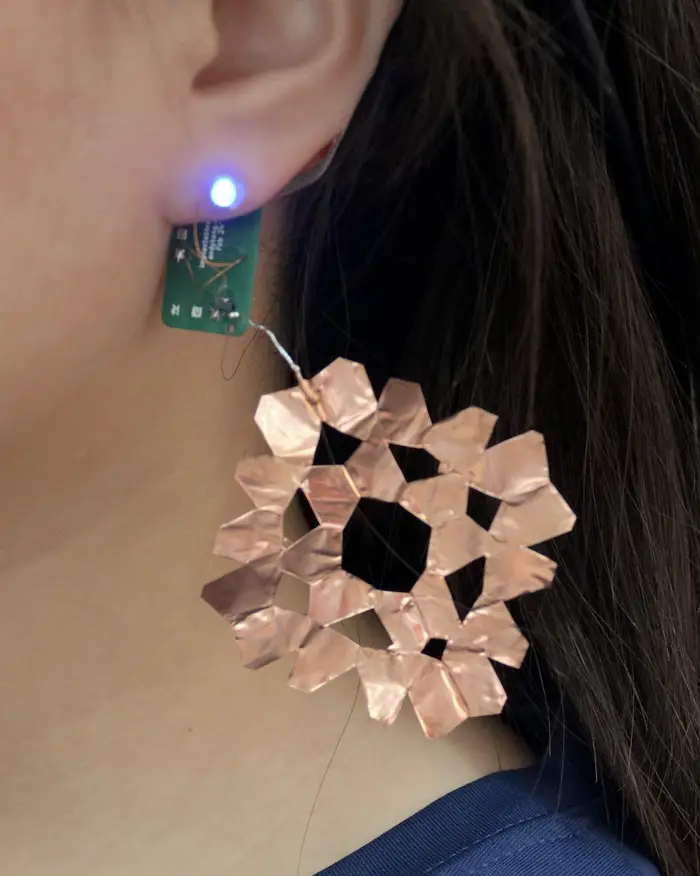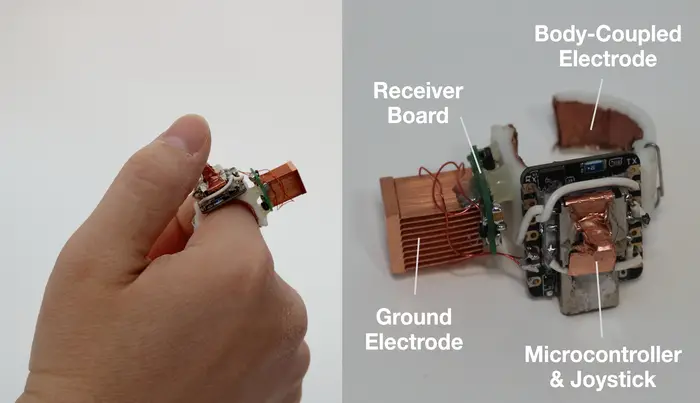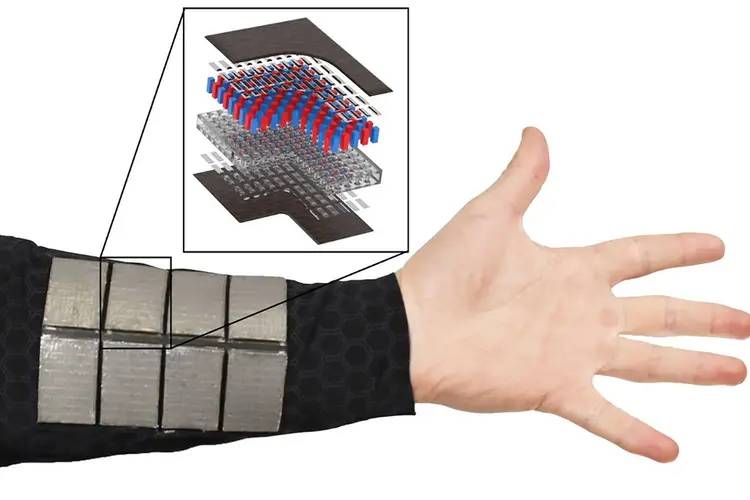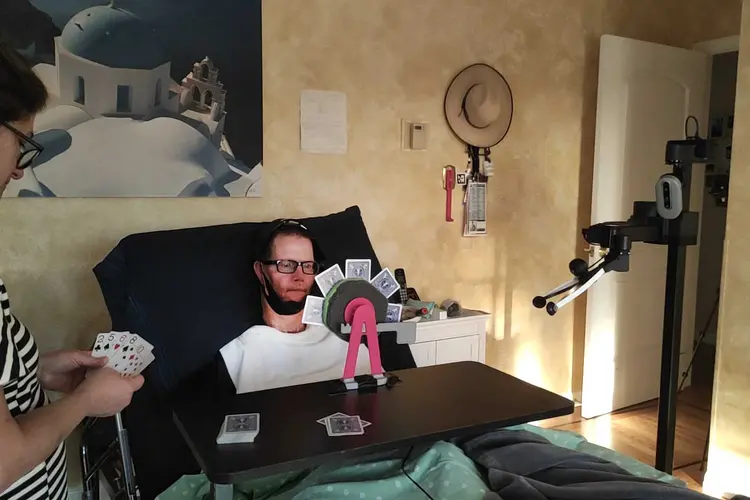SCS Researchers Develop Method To Transmit Power Through the Body
Media Inquiries
People with diabetes rely on continuous glucose monitors to keep track of their blood sugar, but eventually the monitor's batteries need to charge. The same is true for a pacemaker or any mobile device, like a fitness tracker. And batteries are bulky and require regular maintenance.
To free wearable tech from these burdens, researchers at Carnegie Mellon University's School of Computer Science(opens in new window) developed Power-Over-Skin, which allows electricity to travel through the human body and could one day power battery-free devices from head to toe.
"We can expect all our electronics to keep improving," said Andy Kong, part of the team that developed Power-over-Skin(opens in new window). "New releases, such as smartwatches and glasses, will be able to do so much more, but it will always be difficult to get electronics onto the body because people have to think about charging them. Power-over-Skin opens the door to making these devices invisible, allowing them to do their jobs without you noticing, which is how health monitoring should work."
Still in its early stages, Power-over-Skin allows researchers to design and implement new methods of transmitting power frequencies through the human body. In the study, researchers powered small objects like LED lights, but they envision powering smart glasses or other wearables in the future.
Kong, who earned his bachelor's degree from SCS and returned to the Human-Computer Interaction Institute (HCII)(opens in new window) to work on Power-over-Skin in the Future Interfaces Group(opens in new window), said commercially available health-monitoring devices are often placed on the wrist, hand or chest for convenience and to accommodate easy removal. Without a battery, a small health-monitoring device could be embedded into something as unobtrusive as an earring.
Kong worked with HCII Associate Professor Chris Harrison(opens in new window) and doctoral student Daehwa Kim(opens in new window) to develop Power-over-Skin. Prior work demonstrated that the human body can efficiently transmit 40 MHz radio frequency (RF) without losing too much power to the air. The CMU researchers used a single battery-powered transmitter that's worn on the body to send power to receivers — objects like a Bluetooth joystick embedded into a ring and a light-up earring. While study participants wore these devices in locations ranging from the wrist to the ankle, researchers noted a correlation between the power the devices received and their distance from the transmitter. The closer the transmitter, the more power a receiver got.
"It's similar to how a radio uses the air as the medium between the transmitter station and your car stereo," Kong said. "We're just using body tissue as the transmitting medium in this case."
Researchers needed to maximize the amount of power that could be sent through the body efficiently. One method they discovered was transmitting square waves. Previous research focused on sine waves, which have a gradual curve, to transmit the power. A square wave is a pulse of power, similar to an on-and-off switch. Kong said researchers discovered that square waves, which have right angles, resulted in more power received and were easier to generate. He also noted that they discovered this use by accident. Someone left the transmission machine programmed to square waves and — to Kong's surprise — it worked better than other options when he sent power.
While there are no immediate plans to start eliminating all batteries, Kong said there's more to learn about how they can send frequencies through the body and what kinds of devices they can power.
"I think the next step would be increasing the power by about 10 times," Kong said. "When you can power an earbud with it, that could be the first real use case to show off applications besides powering devices like fitness trackers."




